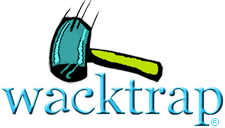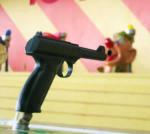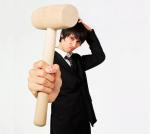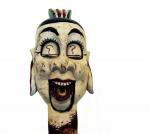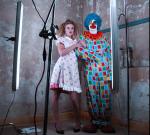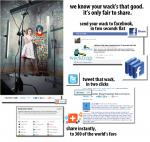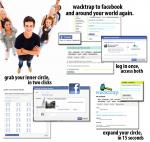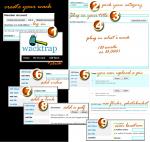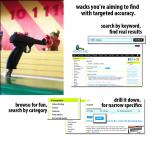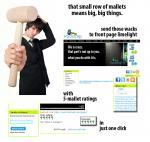What’s your story?
Share and find customer experiences
Connect with the people behind them
Wacktrap is
feedback made social
Trending Content
Spot Counterfeit or Fake China Golf Clubs with Titanium Magnet Test
by copythis
Golf clubs are one of the most popular Father's Day gifts but the vast volume of counterfeits can make it hard to know if you're getting the real deal. Fakes can look virtually identical--but there's a simple test and some clues to tell whether those golf clubs are on the up-and-up, or knock-offs straight from China.
The counterfeit industry is now on a massive scale: 15 to 20-percent of all goods in China are counterfeit. Chinese counterfeits continue to rise in every industry -- with numbers in the sporting goods industry and golf-related goods continuing to rise. Every year, U.S. Customs continues to seize golf balls, golf apparel and clolthing, golf clubs -- and even the small stuff like club covers.
U.S. Customs agents sized 519 batches of fake golf goods that were imported into the country in 2009, and another 786 related counterfeit golf merchandise in 2010.
The newest way to check golf club sets containing potential counterfeits is as simple as a magnet. The "Magnet Test" works for clubs that are supposed to be titanium including the new pricier clubs by manufacturers -- like the Callaway Fusion. A magnet won't stick to the head surface or shaft if the equipment is actually titanium. If a magnet sticks, the clubs are counterfeit: Magnets will never cling to titanium or tungsten golf clubs. Magnets automatically stick to steel or other lesser grade metals or materials. While the test won't work on older clubs like Big Bertha produced earlier in the decade, it works well on many expensive clubs now produced with newer and light materials.
If the magnet test can't verify whether clubs are counterfeit, there are other indicators to help verify authenticity:
The best tip for buyers is to purchase clubs and major equipment from authorized retailers when possible. While it's not impossible for fake goods to get in the hands of authorized retailers by mistake, consumers stand a better chance of obtaining authentic merchandise. Because golf clubs are an expensive investment, the golf club and sporting goods industry -- along with other luxury goods -- the profit potential creates a fertile ground for counterfeiters. The fact that only Ping manufactures golf clubs in the United States doesn't help the problem for the industry: since most golf-related items are imported from other countries, the imports leave lots of room for fakes to squeak by Customs officials.
Major golf club manufacturers like Callaway are continuously plagued by knock-offs bound for the United States from China. Buying from any person or shop who is not an authorized dealer can seriously up the odds for receiving counterfeit clubs. Callaway receives an average of at least four daily reports of suspected fake clubs being offered on eBay. With golf clubs retailing for $70 to $90 each -- or even hundreds per club -- counterfeiters stand to make a hefty profit on good fakes. A fake club can cost only three to five bucks to produce in China, and those clubs can end up in the hands of rip-off artists who -- ironically -- end up selling the clubs at a price not far below the actual retail.
Purchasing golf clubs online or on ebay can be one of the trickiest buys in checking authenticity. Buyers can start out by protecting themselves on ebay golf purchases by starting with a seller that has a high feedback rating, versus a newer seller whose numbers are low. Counterfeit clubs can sometimes be spotted on the auction site through a large price difference -- a big fluctuation between the selling price and the traditional retail for the clubs. Golf merchandise including clubs are a big-ticket item, making it one of the more sketchy zones for shopping on ebay. Buyers should thoroughly check not only feedback ratings but actual feedback comments from previous buyers -- including subsequent pages past page one. With large volumes of feedback arriving daily, negative or specific feedbacks referring to fakes can be buried on the third, fourth or fifth pages -- or even beyond. Buyers who have been scammed often leave details in feedback -- the only way of notifying other potential purchasers of a problem.
To avoid tipping off potential customers straightaway, and to boost their profit margin as much as possible, some ebay sellers sell golf clubs or merchandise near the actual retail price -- making spotting fakes a hard call, sight unseen.
Check the "feel" of your new club and the feel of your swing. Experts recommend holding the grip and physically twisting the club head. Because counterfeits have inferior shafts, a huge increase in torque can be apparent -- particularly with graphite golf clubs where it's noticeable.
Look for mis-spellings and the less obvious tip-offs. While most fakes aren't easy to spot and appear almost identical to the real thing, China is also renowned for inaccurate spelling. Sometimes that lack of spelling can serve as the direct indicator of a fake. Inspect each club closely to inspect for what seems like the small stuff, such as "Callaway" printed as "Callway". If that matches up, be sure to check the basics -- like whether the brand's logo actually matches up to the sporting good industry: U.S. Customers officials recently seized a million bucks worth of karaoke machines to the incoming Long Beach port. The stuff all included a good-looking San Disk logo -- the only problem being that San Disk makes memory for the technology industry, not karaoke equipment.
Customs experts say a prime tip-off can also be in the packaging itself: If interior packing includes instructions or warnings authored in Chinese, when in fact the equipment is supposed to have been manufactured in another country, the item could be counterfeit. Most counterfeit knock-offs including sports equipment, golf clubs and even apparel are manufactured in China -- the chief source of fake arrivals to the U.S. A second tip for double-checking authenticity has to do with written instructions: Chinese fakes often include frequent mis-spellings and odd "typos" or instructions that aren't well-translated to the English language.
Serial Numbers can be the tip-off: some of the more elite golf club manufacturers including Callaway now include serial numbers. Serial numbers for Callaway clubs are printed very faintly on the back of the heel of the club head on woods. For irons, serial numbers can be hidden from easy view, located physically under the grip. On the 8 iron, an industrial strength sticker can appear above the hosel or where the head that connects to the club's shaft -- and that Callaway serial number should be ten digits long. Counterfeiters frequently use either nine or 11 ten digits when using fake serial numbers on clubs. Other than the 8-iron, Callaway clubs that include a serial number above the hosel indicate a fake. Additionally, Callaway only includes serial numbers on 3 woods and 3H hybrids in its fairway wood and hybrid lines.
Look for "serial numbers" where there shouldn't be any: sometimes counterfeiters get over-zealous in trying to make fakes look like the real thing. The inclusion of a serial number -- when one shouldn't exist -- is an equally good sign that things are wrong. Customers may contact the manufacturer directly to verify if a serial number even exists for the line, how many digits should be included and where that serial number should be listed.
Some golf club manufacturers like Callaway will also allow club owners to physically take the equipment into an actual retailer in order to verify authenticity -- or separately submit golf clubs to Callaway Golf Company for inspection. Club owners may phone Callaway Customer Service Department at (800) 588-9836 to arrange for a verification of authenticity by the manufacturer.
Some tips on spotting a potential counterfeit Callaways: Nine or 11-digit serial numbers, lack a visible seam near the perimeter of the club face where a titanium club face is plasma welded to the body, numbering that appears on the actual golf club face, a different font used for font numbering, shaft logos that include minor discrepancies (i.e., fake Fusion clubs can read “RCH System 75″ rather than the correct “RCH System 75i”), an entirely different shaft color than what the manufacturer shows, or a magnet sticking to the club face.
Golf club manufacturers like Mizuno include serial numbers on the hosel of each wood or iron.
Along with the inclusion of serial numbers -- in efforts to combat counterfeits -- counterfeiters continue to make attempts to outsmart the real manufacturers. Some fakes now include what appear as realistic serial numbers on clubs that are truly counterfeit. Club manufacturers like Callaway Golf Customer Service can be contacted directly for customers who fear they've been ripped off with a fake shipment.
There are far more serious problems with counterfeit golf equipment than the loss of hard-earned cash: Using fake golf clubs or balls can be extremely dangerous. Because counterfeit golf clubs aren't weighted correctly and use inferior metals or parts, the shaft can easily break -- causing the club head to fly and injure or potentially kill golfers.
Locations
SPEED UP YOUR ONLINE GROWTH
How To Wack
Take the Tour
Click on any image to start
